#prionailurus
Explore tagged Tumblr posts
Text

Indochinese Leopard Cat | Niran Anurakpongsathorn
#photo#felidae#felinae#prionailurus#prionailurus bengalensis#prionailurus bengalensis bengalensis#mainland leopard cat#indochinese leopard cat#juvenile#niran anurakpongsathorn
198 notes
·
View notes
Text
Phylogenetic wild cat tournament
Leopard cat lineage
Genus: Prionailurus
Depth: 10 (9 wins away from championship)
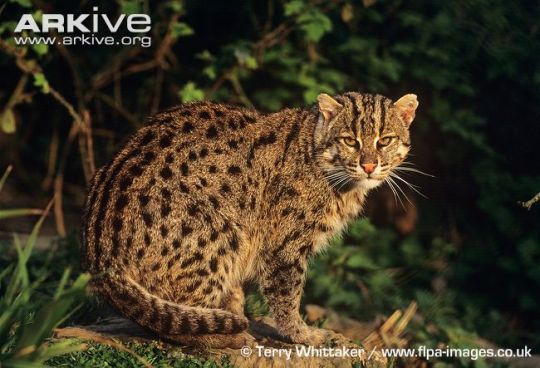
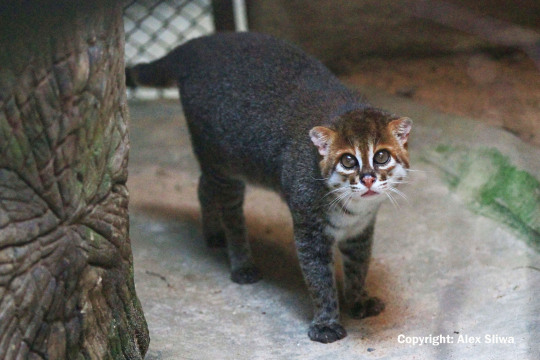
Two pleasantly weird-looking cats, both living around water in Southeast Asia and preying mostly on fish. (My favourite sentence of flat-headed cat's wikipedia page: "They have been observed to wash objects, raccoon-style.") The fishing cat shows the standard Prionailurus spots, while the flat-headed cat is the only non-spotted member of the genus. (It's still agouti, not solid colored - in domestic cat terms, this pattern would be called ticked tabby.)
Fishing cat


Flat-headed cat

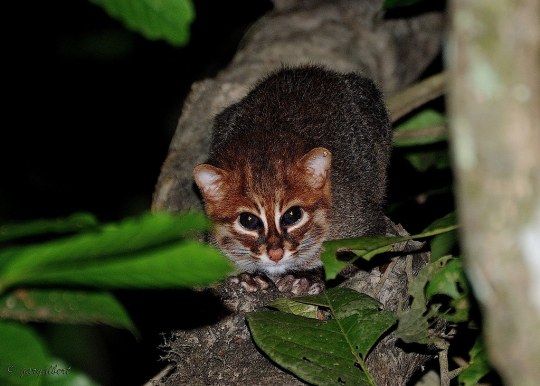
#polls#tournament poll#leopard cat lineage#prionailurus#fishing cat#flat-headed cat#(ugh it's almost impossible to find good pics of the flat-headed cat. or maybe the photos are good and the animals just look like like that
84 notes
·
View notes
Note
Pyrs seem like they'd be more than big enough to bork, or even boof. Your canine cloud's young but full-grown? Still growing? How deep is his voice, and is that something that can...fill out as he ages? I just look at him and think 'it seems like he'd boof'. A big, boofy cotton ball.
he borks and boofs i suppose! he’s got many different types of bark from high-pitched baby barking when he’s feeling bratty to full-on murder barking to tell trespassers he means business! and he’s so loud lol he rattles the walls.
16 notes
·
View notes
Text
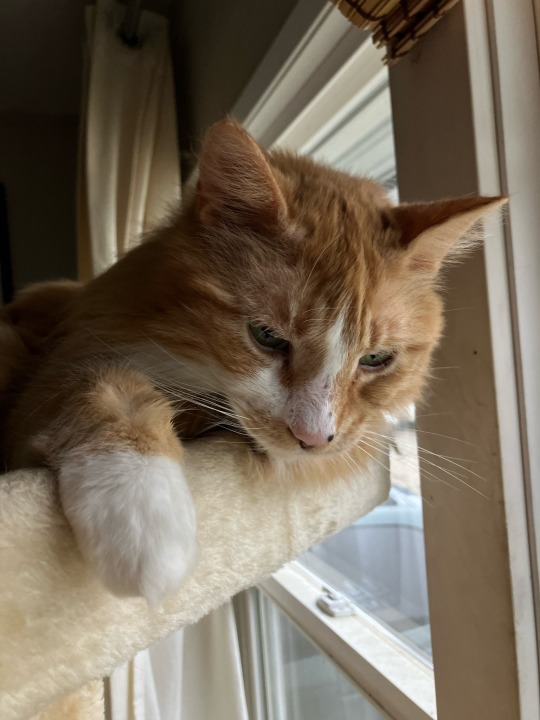
Despite being still fairly feral at thirteen years strong, my boy Casper the orange tabby floof displays multiple traits of domestication: bold white markings, long exquisitely soft hair, and an orange coat which would only ever rarely ever occur in the wild. Also, allergies.
There Was Another Domestic Cat!
I hate that I'm only now in 2024 learning about this rad 2016 cat science find (frustrating that it wasn't more publicized,); there's evidence in China that there was once a second species of domestic cat, Prionailurus bengalensis, or the Asian Leopard Cat. Fellow cat nerds will recognize that this is the same wild species that was hybridized with the domestic cat to produce the famously active and beautiful breed known as the bengal cat, however these ancient domestic cats evidenced in the study share no relation to the modern bengal. Modern domestic cats notably descend from the African wildcat (Felis silvestris lybica.)
The evidence of the domesticated version of the Asian Leopard cat is primarily wear patterns on teeth still connected to jaw bones found in China which do not show up in fully wild kitties. This basically means that these domestic cats were eating a diet which their wild brethren do not consume.
To me, the idea of a second ancient species of domestic cat is extremely intriguing and I will most definitely need to draw a concept if what these cats would have looked like with the calling card bold white markings and other domestic traits which inevitably appear in domesticated animals, as shown in the Russian Silver Fox Project which eventually produced completely domesticated foxes. It would also be very interesting scientifically to see the full ancient domestication of the Asian Leopard Cat reproduced although with thousands of modern domestic kitties in need of homes this experiment is likely never going to happen (which is for the better with so many far more suitable modern purr machines available for adoption.)
Domestication of modern domestic cats (Felis silvestris catus/Felis catus) likely took place on the Mediterranean island of Cyprus some 10,800 years ago with the cats quickly spreading to Egypt and China where they became beloved fixtures of temples, homes and palaces. Today thanks to artificial selection these kitties exist in miriad beautiful breeds and coat patterns but more importantly, modern kitties are noble, affectionate, and extremely social companions of the educated, responsible human household.
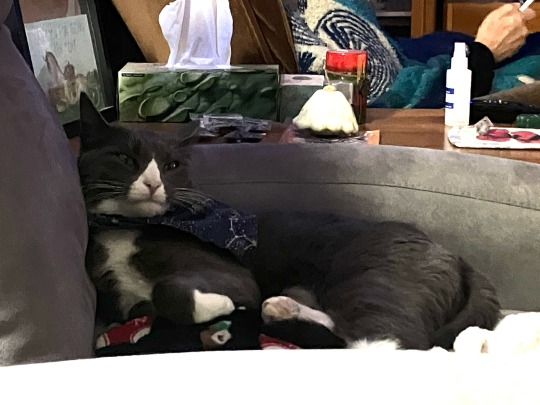
My three year old blue tuxedo cat Keplar, who spends his days playing, following me around everywhere that he can (getting very frustrated when he cannot,) chatting with me, and snuggling with his thirteen year old unrelated fluffy orange tabby brother, Casper. With a dilute gene turningwhat would've been a melanistic coat grey and bold white markings which are found only in domesticated animals, Keplar is an excellent representative of the modern domestic cat.
#cats#cats of tumblr#kitties#domestic cat#house cat#cat#cat news#cat science#asian leopard cat#bengal cat#african wildcat#archaeology#Chinese archaeology#Prionailurus bengalensis#Felis silvestris lybica
22 notes
·
View notes
Text

Rusty Spotted Cat (Prionailurus Rubiginosus)
kingdomoffunnymemes.com
#kingdomoffunnymemes.com#photographer#rusty spotted cat#cat#prionailurus rubiginosus#animal#mammal#wildlife#nature
125 notes
·
View notes
Text















Some of my favourites from Inktober 2023. I decided to draw 1 cat species per day, in a couple of different styles. You can find all of them under the Inktober tag!
#inktober 2023#inktober#felidae#felis margarita#otocolobus manul#leopardus geoffroyi#felis chaus#prionailurus viverrinus#prionailurus planiceps#leopardus braccatus#prionailurus rubiginosus#caracal caracal#lynx canadensis#neofelis nebulosa#leopardus guigna#leptailurus serval#pathera tigris#felis lybica
8 notes
·
View notes
Text
Excerpt from this story from National Geographic. All photographs byJoel Sartore:


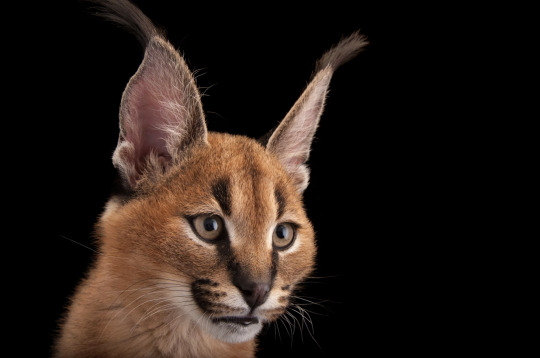
CARACAL | CARACAL CARACAL Consummate predators, some small wildcats can take down larger prey. The caracal of Asia and Africa is less than two feet tall but has been filmed leaping over nine-foot fences to prey on sheep. PHOTOGRAPHED AT COLUMBUS ZOO AND AQUARIUM, OHIO
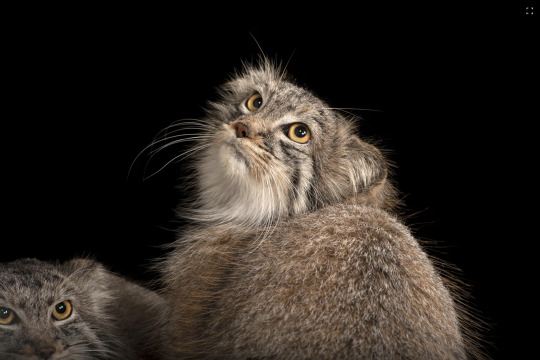
PALLAS'S | CATOTOCOLOBUS MANUL A famously grumpy expression made this Central Asian species an Internet star. Conservationists hope the cat’s celebrity will help save its habitat from encroaching farms and other threats. PHOTOGRAPHED AT COLUMBUS ZOO AND AQUARIUM, OHIO
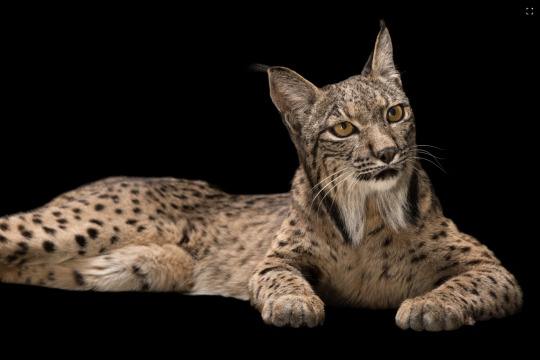
IBERIAN LYNX | LYNX PARDINUS One of the world’s rarest cats, the Iberian lynx is slowly increasing in number as scientists release captive-raised cats and boost populations of rabbits, the lynx’s staple food. PHOTOGRAPHED AT MADRID ZOO AND AQUARIUM, SPAIN
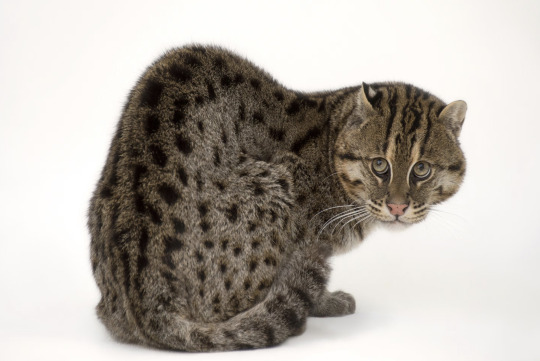
FISHING CAT | PRIONAILURUS VIVERRINUS The cat may look peculiar, but it’s perfectly adapted to its lifestyle: Big eyes help snare prey underwater, double-coated fur keeps out the wet, and partially webbed feet and a muscular, rudderlike tail aid in swimming. PHOTOGRAPHED AT POINT DEFIANCE ZOO AND AQUARIUM IN TACOMA, WASHINGTON
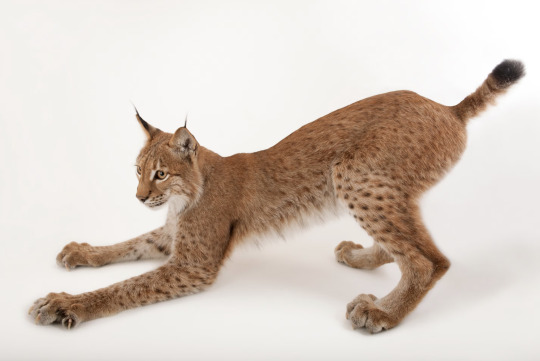
EURASIAN LYNX | LYNX LYNX The largest of the four lynx species, the Eurasian lynx also has a huge range, including most of Europe and parts of Central Asia and Russia. Unlike many other small cats, its population is stable and threats are relatively low—although some isolated subgroups are critically endangered. PHOTOGRAPHED AT COLUMBUS ZOO AND AQUARIUM, OHIO

JAGUARUNDI | SHERPAILURUS YAGOUAROUNDI With long, squat bodies and tiny ears, jaguarundis are otterlike in appearance. Thanks to their huge range—parts of Mexico, Central America, and South America—and lack of widespread hunting, the cat is considered a species of least concern. PHOTOGRAPHED AT BEAR CREEK FELINE CENTER, FLORIDA
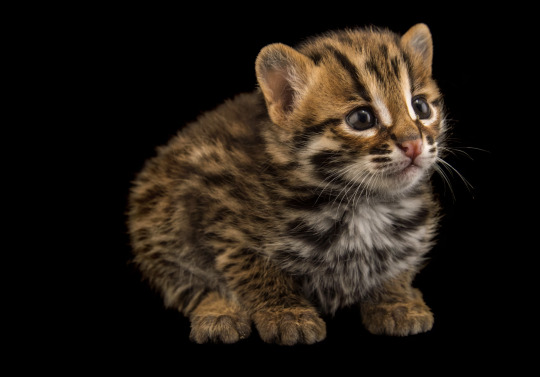
LEOPARD CAT | PRIONAILURUS BENGALENSIS. PHOTOGRAPHED AT ANDERSON, INDIANA
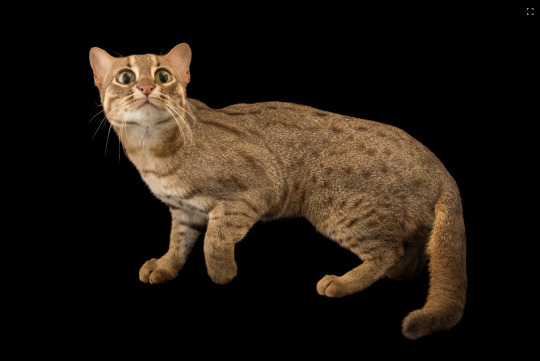
RUSTY-SPOTTED CAT | PRIONAILURUS RUBIGINOSUS The smallest of the small cats, the rusty-spotted cat, a native of India and Sri Lanka, can weigh as little as two pounds. Not much is known about the speckled feline, but destruction of habitat, hunting, and hybridizing with domestic cats are threats. PHOTOGRAPHED AT EXMOOR ZOO, ENGLAND

AFRICAN GOLDEN CAT | CARACAL AURATA Inhabiting the rain forests of West and Central Africa, this species is threatened by forest loss and bush-meat hunters. This seven-year-old male, Tigri, is likely the only cat of its kind in captivity. PHOTOGRAPHED AT PARC ASSANGO, LIBREVILLE, GABON
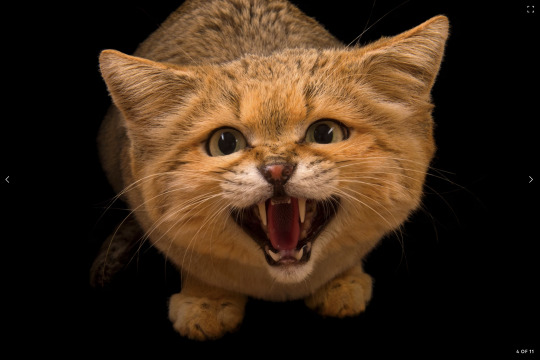
SAND CAT | FELIS MARGARITA. PHOTOGRAPHED AT CHATTANOOGA ZOO, TENNESSEE

CANADA LYNX | LYNX CANADENSIS Like the Iberian lynx, the Canada lynx is a specialist hunter, preying almost exclusively on snowshoe hare. The North American species has giant paws that help it run through deep snow after prey. PHOTOGRAPHED AT POINT DEFIANCE ZOO AND AQUARIUM, WASHINGTON

MARGAY | LEOPARDUS WIEDII. PHOTOGRAPHED AT CINCINNATI ZOO AND BOTANICAL GARDEN, OHIO
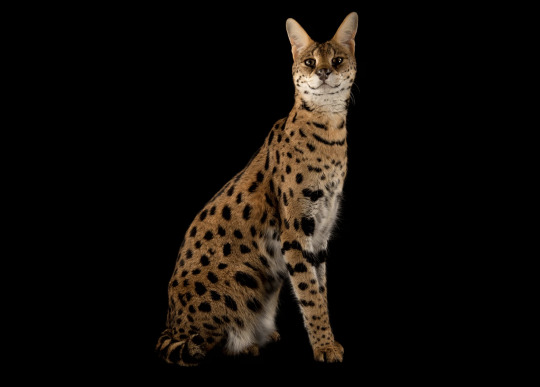
SERVAL | LEPTAILURUS SERVAL. PHOTOGRAPHED AT FORT WORTH ZOO, TEXAS
254 notes
·
View notes
Photo
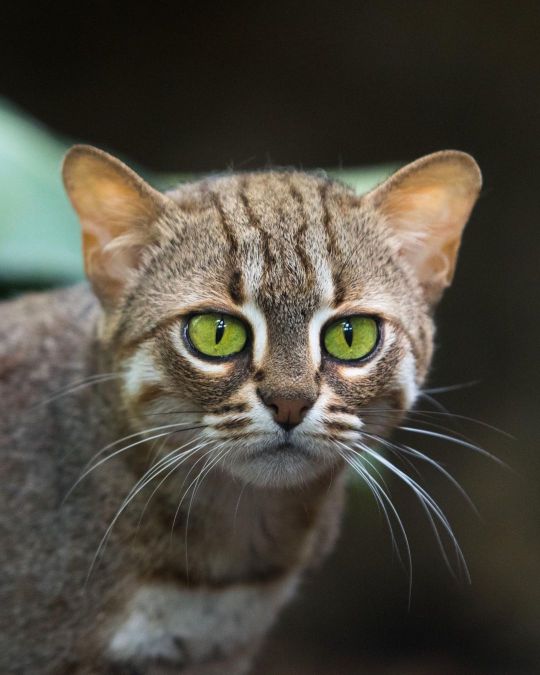
Monday mood? The rusty-spotted cat (Prionailurus rubiginosus). Known as the “hummingbird of cats,” this species is one of the world’s smallest felines, reaching weights of only 3.5 lbs (1.6 kg). Primarily nocturnal, this cat uses its large eyes to hunt under the cover of darkness. It can be spotted in parts of Southeast Asia including India, Sri Lanka, and Nepal. Photo: Cloudtail the Snow Leopard, CC BY-NC-ND 2.0, flickr #cats #catstagram #catsofinstagram #nature #wildlife #amazinganimals https://www.instagram.com/p/CqAzQX_rrSU/?igshid=NGJjMDIxMWI=
1K notes
·
View notes
Note
trick or treat ^__^
You get a fishing cat (Prionailurus viverrinus)!

48 notes
·
View notes
Text

Flat-headed cat (Prionailurus planiceps)
📸 andyaj58 AJ
80 notes
·
View notes
Photo
The Tsushima leopard cat is a wild cat which only inhabits Tsushima Island (about 1/2way between Fukuoka [Kyushu] and S. Korea). It is regarded as a subspecies of the leopard cat, which migrated to Tsushima about 100,000 years ago when the island was connected to the Asian continent. In 1991, the Tsushima leopard cat was designated as a National Nature Monument. However, due to habitat degradation and road accidents, the cat population is decreasing, and in 1994 the Tsushima leopard cat was designated a National Endangered Species in accordance with the Law for the Conservation of Endangered Species. Conservation projects are being carried out so that, in the future, the Tsushima leopard cat can live safely in its natural environment.
Tsushima leopard cats are about the same size as a domestic cat. Differences:
Fur pattern: faint spots
Head: Stripes continuing from the face to the back of the head, and small round ears.
Ears: white spots on the back of the ears.
Text source: Tsushima Wildlife Conservation Center

Tsushima Leopard Cat
5 notes
·
View notes
Text

Mainland Leopard Cat | Chris Dutle [Center for Animal Research and Education]
#photo#felidae#felinae#prionailurus#prionailurus bengalensis#mainland leopard cat#profile#chris dutle
8 notes
·
View notes
Text
Phylogenetic wild cat tournament
Leopard cat lineage
Genus: Prionailurus
Depth: 11 (10 wins away from championship)


After its win, here is a new challenger for the sunda leopard cat: the fishing cat! This little cat is much more robust than the leopard cat species, with smaller ears and eyes, shorter legs and overall larger size (it's the biggest species of the genus). The name is not a coincidence: the fishing cat is adapted to living in and around water, and its main prey is indeed fish.
Sunda leopard cat:


Fishing cat:


#polls#tournament poll#leopard cat lineage#prionailurus#sunda leopard cat#fishing cat#phylogenetic wild cat tournament
39 notes
·
View notes
Text

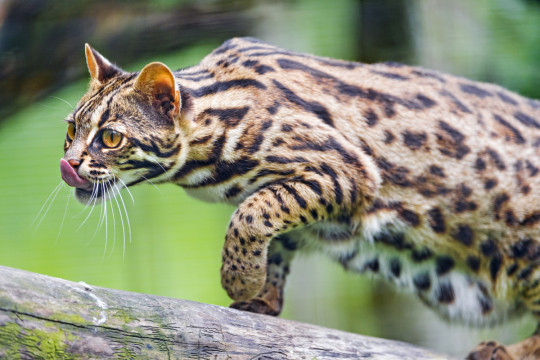
[ID: a photo of a Pallas's cat and a photo of a leopard cat. the Pallas's cat is a small cat with a very dense coat. its face is very square and it looks "grumpy." the leopard cat is a small cat with a light yellow coat with brown spots. end ID]
note: the pallas's cat is also known as the manul
158 notes
·
View notes
Text

Iriomote Cat (Prionailurus bengalensis iriomotensis)
Iriomote Island, Japan
Status: Critically Endangered
Threats: development, traffic, accidental trapping
ahhh the bliss of having a cat notice you... even if it is biting you
#azumanga daioh#wildlife art#cat#cat art#endangered species#japan#iriomote cat#mammal#feline#wild cat#asia
41 notes
·
View notes
Photo
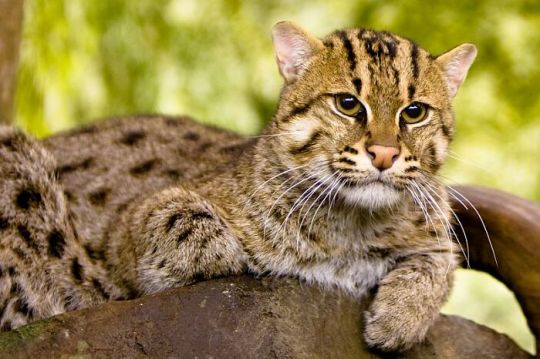
Rarest Animals In The World That Are On The Brink Of Extinction
Fishing Cat (Prionailurus Viverrinus)
Wikimedia Commons
#wikimedia commons#photographer#fishing cat#cat#prionailurus viverrinus#mammal#animal#wildlife#extinction#vulnerable#nature
82 notes
·
View notes